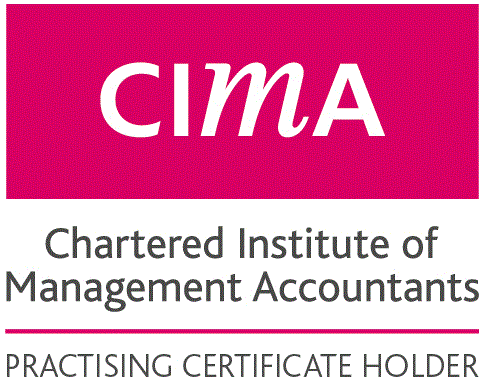

Signs Your Business Might Be Spiralling Financially (and What to Do About It)
Running a business is a lot like steering a ship: most days go well, but sometimes you don’t realise you’re veering dangerously close to rocks until you’re getting tossed around. When your finances start spiralling, it's important to spot the warning signs early and take solid steps to regain control. This post will help you identify those red flags and give you actionable steps for managing business finances more securely.
1) Warning Bells: The Symptoms You Can’t Ignore
Before we dig into what to do, let’s talk about what “spiralling financially” looks like. Here are common symptoms that businesses often ignore until it’s too late.
Cash flow squeezes: You’re consistently waiting on invoices, but your outgoings (rent, salaries, supplier payments) are coming due. Cash is going out faster than it’s coming in.
Declining profit margins: Even if your sales are holding up, your profit margin is shrinking because costs (materials, labour, software subscriptions, interest) keep rising.
Relying heavily on credit or overdraft usage: If your overdraft is tipped regularly or you’re using credit cards to cover day-to-day expenses, that’s a serious warning sign.
Rising debt: Loans, supplier credit, or tax liabilities building up without a plan to reduce them.
Repeated budget overruns: You set budgets, but consistently overshoot, on marketing, operations, personnel, whatever the area.
Delayed financial reporting: Your management accounts, cash-flow forecasts, or P&L statements are late, or not produced at all. If you don’t know your numbers, you can’t manage them.
Creditors chasing you: Suppliers, HMRC, landlords or lenders are contacting you more frequently.
Unusual customer behaviour: More refunds, more discounting needed to win work, or clients are slowing down payments.
If more than two or three of the above are happening in your business, then it’s time to take action on managing business finances seriously.
2) Why Things Spiral: Underlying Root Causes
Understanding why things are going wrong helps you fix them. Here are some root causes that are often overlooked.
Lack of realistic cash flow forecasting: Many businesses plan sales and forget to plan the timing of money coming in vs going out. That mismatch creates pinch points.
Poor budgeting or cost control: Unchecked subscriptions, escalating supplier costs, or overheads that grow unchecked.
Pricing that isn’t keeping up with costs: Inflation, labour, raw materials is all rising. If your prices are stagnant, margin erosion happens fast.
Overextension: Taking on too many projects, expanding too fast, hiring before revenue justifies it.
Client concentration risk: Depending on one or two clients for most of your income. If one leaves or delays payment, you’re in trouble.
Slow receivables: Having invoices outstanding for 60-90 days or more regularly. Bad debt adds up.
Under-utilised assets: Software licences, premises, staff whose capacity isn’t fully used all cost money even if under-used.
These root causes often combine: for example, price stagnation + rising costs + slow receivables = profit erosion and cash flow squeeze. Recognising which areas are exposed is essential for managing business finances well.
3) What to Do Immediately: Damage Control Steps
Once you see the signs and understand the likely causes, you need to act. Here are immediate steps to begin the turnaround.
A) Build or update your cash flow forecast
Map out your cash inflows and outflows for the next 3–6 months. Be conservative: assume some invoices will lag, customers might delay.
Identify pinch months (where outflow > inflow). Plan for them.
B) Trim costs, fast
Review all overheads: subscriptions, rents, travel, utilities. Cancel anything that doesn’t contribute enough value.
Negotiate with suppliers: ask for better payment terms, discounts, or delayed invoicing.
Delay non-essential spending (new hires, capital expenditures) until cash flow improves.
C) Review pricing and billing practices
Check if your pricing covers your real costs plus margin; consider increasing prices if possible.
Institute stricter payment terms: deposits, late payment fees, incentives for early payment.
Tighten invoicing procedures so invoices go out promptly and follow up on overdue ones.
D) Improve receivables
Run aged debtor reports regularly.
Prioritise collection efforts where money is outstanding.
Use reminders, phone calls, and potentially small settlements for stale debts.
E) Seek extra short-term funding (if needed)
Overdrafts, invoice factoring, short-term loans but only do this as a tactical fix, not a long-term crutch.
Talk to your bank or alternative lenders early if you anticipate cash-flow gaps.
F) Improve financial reporting and discipline
Get management accounts or P&L statements monthly (or even weekly for cash flow).
Set up dashboards or KPIs to monitor key metrics: cash runway, profit margins, client concentration, overdue invoices.
4) Medium-Term Fixes: Building Structural Stability
Once immediate fixes are in motion, you’ll want to shore up your foundation so you don’t fall back into the same trap.
1. Diversify revenue streams
Don’t rely on a handful of big clients. Explore adding new lines or secondary services.
Create retainer contracts or recurring income where possible.
2. Right-size your cost base
Evaluate staffing: is there overcapacity? Can roles be merged or outsourced more cheaply?
Use technology to automate repetitive tasks. This may mean up front investment but often pays off.
3. Strengthen cash reserves
Gradually set aside a cash buffer: 1-2 months of fixed costs, ideally more.
Focus on receivables turnover: faster invoices mean more ready cash.
4. Renegotiate key contracts
Long leases, supplier contracts, equipment rental or software licences can sometimes be reworked for better terms.
Lock in fixed-cost contracts where possible to control input price volatility.
5. Re-evaluate business model and strategy
Are you offering products or services that customers really value? Do market demands or trends suggest you should shift?
Check your pricing strategy: value-based pricing often outperforms cost-plus in tough times.
Consider whether certain low margin or low growth lines should be discontinued.
5) Preventive Habits: Best Practices for Managing Business Finances
Turning around spiralling finances is half mindset, half discipline. These habits help ensure your business stays stable.
Regular financial check-ins: Weekly or fortnightly review of cash flow, margin movements, invoices outstanding.
Budget vs actual: Set forecasts, then compare what you actually did. This reveals where your numbers are going off track.
Scenario planning: What if you lose your biggest client? What if costs increase by 10%? Have contingency plans.
Monitor key financial metrics:
Gross margin
Net profit margin
Cash runway (months of cash you have)
Days payables outstanding / days receivables outstanding
Client concentration (percentage of revenue from top 1-3 clients)
Use good bookkeeping and accounting tools: Ensures data is accurate, timely, and trustworthy. Helps enormously with managing business finances because you can only react to what you can measure.
Engage professional help when needed: An external accountant or financial advisor can spot things you miss, bring fresh perspective, and often save you more than they cost.
6) Case Study: Turning It Around (fictional example)
To make this more concrete, let’s imagine BrightSpark Designs, a small graphic design agency.
They have three big clients who account for 70% of their income.
Recently, supplier costs (licences, software, subcontractors) rose significantly.
Their invoices often took 60 days to be paid.
Overhead costs crept up: subscriptions, rent, and unused software seats.
They were showing decent sales, but profit margins fell, cash flow was tight.
What BrightSpark did:
Mapped cash flow over 6 months and identified a cash gap in months 4-6.
Negotiated extended payment terms with two suppliers.
Raised prices for new clients by 10%, justified by “inflation and quality improvements.”
Cut unnecessary subscriptions and consolidated software licences.
Introduced deposits or upfront partial payments for big projects.
Diversified revenue: launched a monthly retainer package for recurring design work.
Within four months, their cash flow gap was covered; profit margins improved; reliance on the three big clients dropped to 50% of revenue.
7) Ongoing Monitoring & When to Seek Help
Even after you’ve made improvements, vigilance matters.
Always keep an eye on your cash runway, how many months you can cover operating expenses without new income.
Monitor for early warning signs again. Financial stress tends to creep back in.
When to seek help:
If cash flow is negative for more than a couple of months.
If liabilities (suppliers, tax, debt) are growing faster than your ability to repay.
If you’re unable to produce accurate financial statements in a timely way.
If stress or management capacity is overwhelmed, bringing in a financial consultant or turnaround specialist can make a big difference.

FREE DOWNLOADS
A-Z of allowable business expenses
Download your A-Z guide of allowable business expenses.
Financial Housekeeping For Your Small Business
Download your guide to Financial Housekeeping For Your Small Business - ideal for start ups and early stage businesses
How to Scale Up your Business: Tips and Strategies for Success
Download your guide to How to Scale up your Business - ideal for slightly more established businesses that want to grow and scale their business
Don't want the guide?
But do want our regular email filled with tips and insights into business and how to maximise profit and grow your business?
Click here

Ready to take the stress out of finance?

Not quite ready to commit to a long term contract ? Book a value packed Power Hour for now at £180 Inclusive of VAT.






© 2023 All Rights Reserved | Sterling Financial Management Reg No 9780783,
Accounting, Bookkeeping and Business Advisory based in Dorking Surrey RH4 2JF
Reg Office : 71-75 Shelton Street, Covent Garden, London, WC2H 9JQ